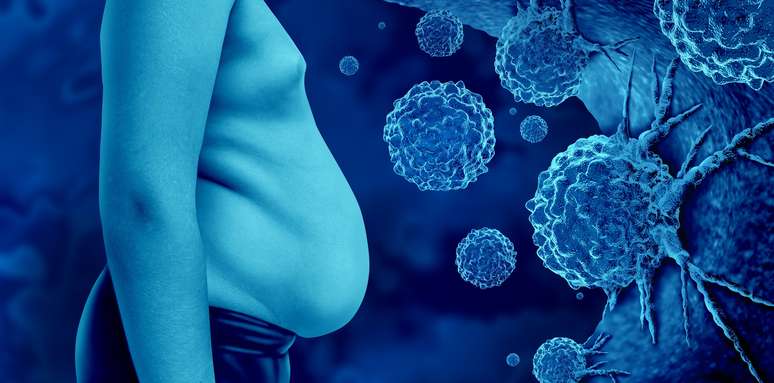Study Finds Increased Risk for 17 Types of Cancer; But There’s Good News
A study has identified 17 types of cancer that appear to be more common among Gen Xers and Millennials than previous generations.
According to a study published in the journal The Lancet Public Health, there is a significant difference in cancer incidence and disease type among adults born between 1920 and 1990.
A notable example is uterine cancer (not cervical cancer). The incidence rate is about 169% higher for those born in the 1990s than for those born in the 1950s, when compared to people of the same age.
Incidence increased to 17 types
Dr. William Dahut, chief scientific officer of the American Cancer Society and one of the study’s authors, says the work looked at the incidence of different cancers in the population.
“He [o estudo] We actually looked at 34 different types of cancer, in 17 we saw an increase in incidence, and in 5 we saw an increase in mortality in young adults under 50.”
These 17 types of cancer are:
– gastric cardia (transition between esophagus and stomach)
– small intestine
– estrogen receptor positive breast
– ovary
– liver and intrahepatic bile duct (in women)
– oral cavity and pharyngeal cancers not associated with HPV (in women)
– year
– colon and rectum
– uterine body
– gallbladder and bile ducts
– kidney and renal pelvis
– pancreas
– myeloma
– non-cardiac gastric
– testicle
– leukemia
– Kaposi’s sarcoma, which affects the lining of blood and lymph vessels (in men)
The researchers, from the American Cancer Society and the University of Calgary in Canada, analyzed data from more than 23 million patients diagnosed with 34 types of cancer and more than 7 million people who died from 25 types of cancer.
The data, from the North American Association of Central Cancer Registries and the U.S. National Center for Health Statistics, included adults ages 25 to 84 from January 2000 to December 2019.
Higher mortality rates
The researchers calculated cancer incidence rates and cancer death rates by birth year, separated by five-year intervals, from 1920 to 1990.
The rate was about two to three times higher among those born in 1990 than among those born in 1955 for cancers of the pancreas, kidney, and small intestine in men and women and for liver cancer in women.
Among cancer types, the increase in incidence rate among people born in 1990 ranged from 12% higher for ovarian cancer to 169% higher for uterine cancer compared with birth cohorts that had the lowest incidence rates.
Lifestyle changes
Researchers say the rising incidence of certain cancers among young adults in the United States has to do with lifestyle changes or exposure to certain environmental factors.
The researchers found that 10 of the 17 cancers with the highest incidence in younger birth cohorts were linked to obesity: colon and rectum, kidney and renal pelvis, gallbladder and bile duct, uterine corpus, pancreas, gastric cardia, estrogen receptor-positive breast, ovary, myeloma, and liver and bile duct.
Because cancer takes time to develop, obesity-related cancer in a young adult may be associated with childhood health.
The researchers also found that cancer death rates increased in younger generations, along with incidence rates of liver cancer among women, as well as cancer of the uterine corpus, gallbladder, testicles, colon and rectum.
Fewer HPV- and tobacco-related cancers
But the study also contains some good news: Among the cancers that are stable or even declining in younger generations are those related to tobacco, such as lung cancer, and HPV infections, such as cervical cancer.
The “accelerating decline” in cervical cancer incidence trends illustrates the effectiveness of HPV vaccination among women born around 1990. And declining trends in tobacco-related cancers accompany a rapid decline in smoking prevalence among younger generations.
Another good news is that medicine has increasingly developed tools that allow the diagnosis of various types of cancer in the early stages, which leads to a greater chance of survival.
Exams before
In 2021, the U.S. Preventive Services Task Force (USPSTF) lowered the recommended age to begin screening for adults at average risk for colon and rectal cancer from 50 to 45.
This guide is for those who have no symptoms and who do not have a diagnosis of colorectal cancer, a history of polyps in the colon or rectum, or a personal or family history of genetic conditions that put them at increased risk.
The task force also updated its breast cancer screening recommendations for average-risk adults, recommending mammograms starting at age 40 and continuing through age 74. The previous recommendation called for mammograms to begin at age 50.
Raising awareness among doctors and patients
Regardless, researchers recommend that there be more awareness of the signs and symptoms of cancer among young adults. Most types of cancer can include abnormal bleeding (such as vaginal or fecal bleeding).
Persistent pain that the person usually does not feel should also be considered, as well as unexplained lymph nodes or abnormal growths. Fatigue and weight loss are also symptoms that may indicate advanced cancer.
Source: Terra
Ben Stock is a lifestyle journalist and author at Gossipify. He writes about topics such as health, wellness, travel, food and home decor. He provides practical advice and inspiration to improve well-being, keeps readers up to date with latest lifestyle news and trends, known for his engaging writing style, in-depth analysis and unique perspectives.








